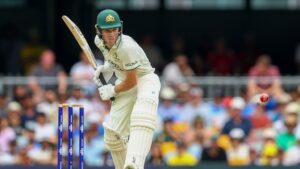Retiring Workers Alter Fed’s Calculus on Jobs Shortfall

WASHINGTON—Federal Reserve officials have long said a key condition for raising interest rates is a return to maximum employment. Their evolving views about how much job growth that will entail could lead them to roll back support for the economy sooner than previously expected.
Policy makers are likely to discuss when and how to start reducing monthly purchases of bonds, a prelude to eventually raising rates, at a meeting this Tuesday and Wednesday. They have said since December that to justify reducing bond purchases, the economy needed to make “substantial further progress” toward maximum employment and sustained 2% inflation.
The Fed has never put a number on its full employment target. Still, central bankers for months have compared current employment to the number of jobs in February 2020, before the pandemic hit the U.S. economy, to illustrate the ground that needed to be made up. Chairman
Jerome Powell
said earlier this year that gap was “one way of counting it.” In May, the shortfall stood at 7.6 million jobs.
But in recent weeks, policy makers have become less confident the economy can recover all the jobs lost amid the pandemic without spurring inflation. Employers added fewer payrolls than expected in April and May, even as the economy grew rapidly, wages rose and other indicators pointed to a shortage of workers. The unemployment rate also continued to fall, to a pandemic low of 5.8%. In part that is because fewer people are returning to the labor force in search of work. The number of people who are working or want to work is still 3.5 million shy of February 2020, and the labor-force participation rate, at 61.6%, is down from 63.3% then.
The Fed believes many factors holding back the labor force are tied to the pandemic and will fade later this year.
But one might not: The 2.6 million people who retired since February 2020, according to estimates from the Dallas Fed. A steadily aging U.S. population suggests limited scope for reversing that trend, some economists say.
“The number of people who left the labor force through retirement was higher during this pandemic recession-recovery than in previous recession-recoveries,” Cleveland Fed President
Loretta Mester
said June 4 on CNBC. “Typically, when people retire, they don’t come back into the labor force.”
Treasury Secretary
Janet Yellen,
an economist who headed the Fed from 2014 to 2018, said on June 5 that while employment remains more than 7 million jobs below pre-pandemic levels, increased retirements could mean “we don’t need to regain quite that many to get back to full employment.”
While current Fed officials have been less explicit in their public comments, they have signaled a similar openness. “Whatever…the maximum rate of unemployment is, it’s something that varies over time for structural reasons,” Fed Vice Chairman
Richard Clarida
said last month. “Labor-force participation evolves for a number of reasons, and so I do think that, going forward, speaking for myself, we have to be very attuned and attentive to see how the post-pandemic labor market clears.”
Because of the retirement wave, Ms. Mester said she is focusing more closely on participation in the labor force by people who are of prime working years, ages 25 to 54.
Progress toward maximum employment is one of the Fed’s main criteria for pulling back the easy-money policies rolled out during the pandemic. If officials become convinced that the economy is destined to operate with lower rates of labor-force participation than before, they could start to tighten policy sooner than expected.
Since last year, the Fed has been buying $120 billion of Treasury and mortgage bonds each month and holding overnight interest rates near zero. Many economists expect the Fed to begin reducing the bond purchases later this year or early next.
The Fed has said it would refrain from raising interest rates until inflation is 2% and likely to go higher and maximum employment is achieved. When they last released projections, in March, most Fed officials expected the first rate increase in 2024 or later.
But since then, surprisingly strong inflation in April and May and the rethink on maximum employment suggest those conditions might be met sooner. That could be reflected in Fed officials’ updated rate projections to be released Wednesday.
Central bankers hope that by the fall—when enhanced unemployment programs expire, schools reopen and more people are vaccinated—hiring will pick up steam and some recent retirees may return to the labor force.
During the last economic cycle, Fed officials were pleasantly surprised to see unemployment reach 50-year lows without stirring inflation. That happened in part because a tight labor market steadily drew people into the workforce who hadn’t been looking for jobs.
If such a pattern recurs in coming months, it would ease concerns that worker shortages could result in a more-persistent rise in inflation.
“The spike in retirements may well moderate in a stronger economy, as we saw in the year or two before the pandemic,” the Fed’s vice chairman for supervision,
Randal Quarles,
said May 26. But, he added, “We may need additional public communications about the conditions that constitute substantial further progress since December toward our broad and inclusive definition of maximum employment.”
Write to Paul Kiernan at paul.kiernan@wsj.com
Copyright ©2020 Dow Jones & Company, Inc. All Rights Reserved. 87990cbe856818d5eddac44c7b1cdeb8









